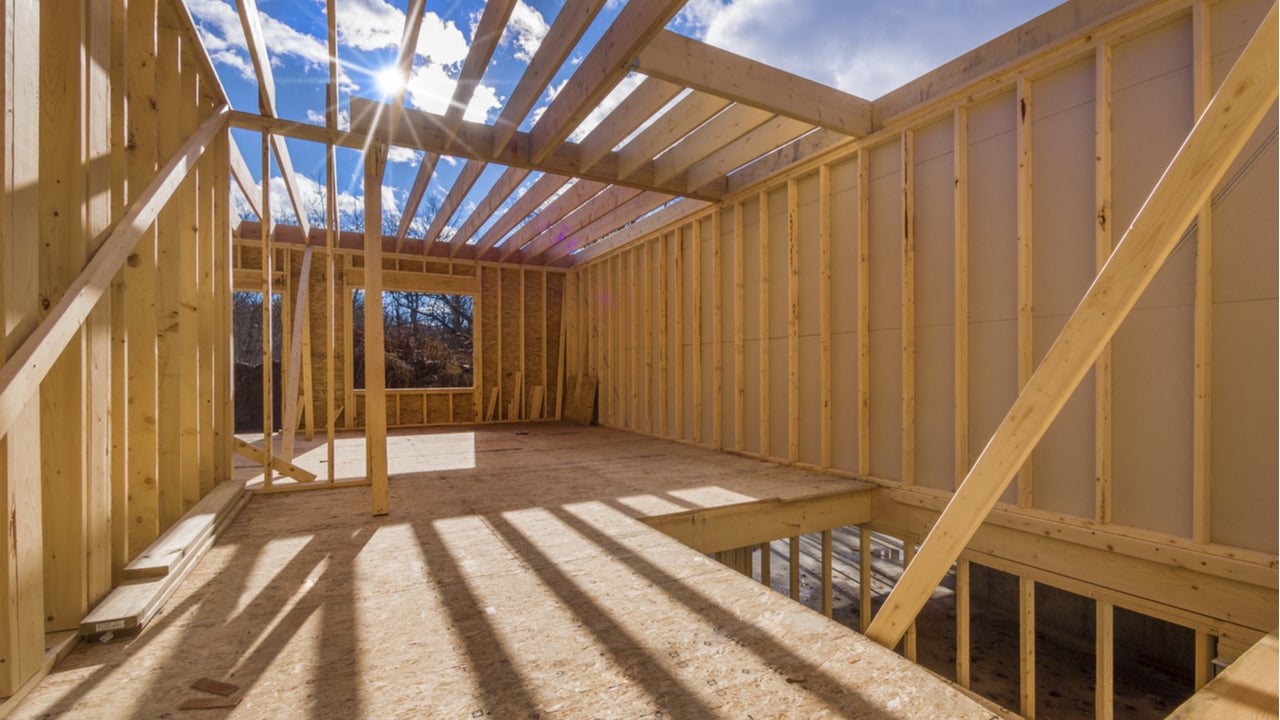Securing housing after domestic violence

Each minute in the U.S., an average of 24 people are physically abused or stalked by an intimate partner. That is more than 12 million people per year. Sometimes, leaving an abusive situation is only half of the battle — especially for those who live with their abuser. Survivors of domestic violence may struggle to secure housing once they are out on their own. Bankrate has put together this guide on navigating life after domestic violence, with lists of resources and tips on how to move forward safely.
Recognizing types of abuse
Domestic abuse can be challenging to identify because of its deceptive and manipulative nature. While it may seem obvious, domestic abuse is not always easy to recognize, even for the victim.
As a licensed clinical social worker, Tracie Carter of TRC Counseling Services says, “The impact of abuse on each individual can be different. This can depend on the frequency and extent of the abuse, whether children are involved, the victim’s mental/physical health when the abuse begins and the victim’s previous victimization.”
Melissa Hoppmeyer, chief of the Special Victims Unit and co-host of the No Grey Zone Podcast focusing on domestic violence, goes into further detail: “Domestic violence involves power and control against the victim. The abuser uses multiple means of power and control, including financial abuse, isolation, gaslighting and violence.”
Domestic violence is not always physical; there are several forms of domestic abuse.
- Emotional: Emotional abuse involves manipulation through control, embarrassment, shame, fear, blame and other negative feelings. Nearly half of all men and women in the U.S. have experienced a form of psychological aggression by their partner.
- Verbal: An abuser uses words to threaten, bully, demean and hurt others. It can involve yelling, name-calling and belittling a person. One in five college-aged women reports verbal abuse by a dating partner.
- Physical: Physical abuse occurs when someone causes intentional bodily injury to another. It can involve hitting, slapping, pinching, biting, choking, using physical restraints or drugging someone.
- Sexual: Abuse of a sexual nature includes any form of unwanted, non-consensual sexual contact or act.
-
Financial: Economic abuse involves seizing control of finances. It may even involve preventing a victim from working or going to school. There are multiple ways abusers can control victims’ finances, including:
- Limiting access to cash and bank accounts
- Controlling use of ATMs, debit cards or credit cards
- Seizing money from the victim
- Keeping all assets in the abuser’s name
- Using victim’s finances without knowledge or consent
- Coerced debt, or using the victim’s credit without knowledge or consent
If the abuse is more of a suppressive or oppressive, controlling nature, money is often used as the tool. If a spouse is controlling with money, the dependent spouse has to look to the controller for an allowance or a way to be able to spend money for groceries, children’s things or a simple manicure from time to time.— Sabrina Shaheen Cronin, managing attorney, Genesis Legal Group of Michigan
To contact the National Domestic Violence Support Hotline, you can call 1-800-799-7233, text “START” to 8878 or use the live chat feature on their website. Phone lines are open 24/7, and experts there can point you to the best local resources.
Common challenges when leaving your abuser
While it may seem like a simple solution, leaving an abusive situation is never as easy as it seems. On average, it takes a domestic abuse victim seven tries to leave their abusive environment for good. That is not because a victim does not want to, but because there are other forces at play that may make it feel impossible to leave.
One of these forces is fear. Abusers thrive on fear, and as the abuse perpetuates, the fear can almost become debilitating. There is also the fear of what comes after; abusers often retaliate violently after a victim leaves in an attempt to regain control.
Bankrate spoke to Ron Blake, a self-described “blue-collar male domestic violence survivor.” Blake works with the Arizona Coalition to End Sexual and Domestic Violence. In his own experience dealing with domestic violence, he mentions that fear of the unknown plays a role in more ways than one: “The fear of losing our money, our home, our pets, our credit cards or credit score, our job or business. The fear of losing the love of our life, of trusting ever again. The fear that we will never understand ‘why?’”
Other obstacles that prevent victims from leaving their abusers include:
- Emotional or romantic attachment to an abuser
- Financial dependency on an abuser
- Sharing children or pets with an abuser
- Lack of resources like a phone, car or computer
What to do after domestic violence
Leaving an abusive environment is not typically a decision made overnight. It can take a lot of time and preparation to ensure a safe departure. If you are struggling with what to do after domestic violence, these survivor tips may help point you in the right direction:
- Set money aside secretly. If possible, open a new bank account or find a safe place to set aside extra money so you have funds available when it’s time to leave.
- Pack an emergency bag. Fill a bag with essentials and store it somewhere your abuser will not find it. This should include things like your car keys, cash, medication and a change of clothes. If you are bringing a tablet or laptop with you, ensure that location tracking is disabled.
- Get a prepaid phone. Pay-as-you-go phones are easy to buy with cash and can help ensure secure conversations without your abuser having access. If you have a smartphone, you might want to ditch it in favor of something more low-tech to make sure your abuser cannot use location tracking.
- Secure important documents. Gather or make copies of all important paperwork you may need for you and your children. Documentation such as your identification, passports, birth certificates, social security cards, marriage license, car title and mortgage/deed could all be helpful. If you cannot obtain hard copies, you might want to scan your documents and store files on a USB drive.
- Plan and prepare for your departure. Create a safety plan to help you leave, which could include everything from planning alternate exits to coordinating with friends and law enforcement.
- Contact local law enforcement. Local law enforcement can help with a protective order or police escort when it is time to leave. You can also request that the police be on call in case of trouble when you go. Resources vary on a state-by-state basis, so ask your local police department how they can help you get out safely.
- Tell your loved ones. Be sure to share your plans with trusted loved ones and provide clear instructions not to threaten your escape plan.
“You should go somewhere that your abuser would not look for you,” says Hoppmeyer. “Tell very few people where you are, change your number and disable location services. Look into apps like VictimsVoice and Ur Safe that document any further abuse or stalking.”
How to find housing after domestic abuse
Finding housing after domestic abuse is an intimidating process — but it can be done. Once you’re safely away from your abuser, you can follow the steps listed below to help you secure safe and comfortable housing.
1. Find immediate shelter
Avoiding homelessness is a serious concern for those escaping domestic violence. Over 90 percent of homeless women are survivors of severe physical or sexual violence, and studies show that 38 percent of housing recipients in local domestic programs are children.
“Your local domestic violence shelter can help by assisting in developing a safety plan and sharing community resources,” explains Melanie Carlson, PhD, MSW. “Every state has a statewide coalition against domestic violence. From there, you can find out how to contact your local domestic violence program’s hotline.”
If you don’t know where to begin looking for temporary housing, check the following resources:
Housing resources and support
| Resource | How it can help |
|---|---|
| DomesticShelters.org | 24/7 hotline with online database of DV shelters |
| National Coalition Against Domestic Violence | Lists state coalitions for local services |
| HUD Exchange | State-by-state listing of housing contacts to avoid homelessness |
| Just Shelter | State community resources for safe, affordable housing |
| Family Violence Prevention Services | Provides access to safe and sanitary housing for survivors of domestic violence |
Some domestic violence survivors may prefer to live with family members or trusted friends instead of going to a shelter. If that is the case, it’s important to keep an open line of communication with whomever you are living with. If they are aware of the situation, they will be better able to help keep you safe. Teach your hosts the warning signs so they can keep an eye out for your abuser: what they look like, what car they drive, their identifying features, etc. It may also be a smart idea to obtain a protection order from the local police near your new home.
If you are a family member or friend of a survivor, the following resources can help you best support a survivor of domestic violence:
Support for survivors and families of domestic violence
| Resource | How it can help |
|---|---|
| National Suicide Prevention Lifeline | Free, confidential 24/7 support with prevention and crisis resources for survivors and loved ones |
| Substance Abuse and Mental Health Services Administration (SAMHSA) | National helpline for those with mental health or substance use disorders |
| Red Cross Virtual Family Assistance Center | Support for loss, grief and emotional difficulties |
2. Protect your new home
Once you’ve found a new place to live, it’s important to shore up your home security. A doorbell camera can help you keep tabs on your property when you’re not around. Setting up timed lights can give the appearance that you are home, which may ward off a potential intruder. Door security bars may also help you feel more secure.
Carter offers some additional tips based on her experience working directly with survivors. “Ensure that your home has more than one exit,” she urges. “Do not move above the third floor of an apartment complex in the event you need to escape from the balcony or on the first floor so that someone has easier access to break into the apartment.”
Another important part of protecting your new place is making sure that it is insured with either a renters insurance or homeowners insurance policy. If your home is broken into by your abuser, an insurance policy can help you pay for the resulting damage both to your physical space (broken windows, busted doors, etc.) and to your personal belongings. Insurance coverage may also offer vital financial protection for those living on limited resources after leaving an abusive situation.
3. Consider a restraining order or other legal action
If you need to, it may be worth pursuing a restraining order or other legal action to prevent your abuser from contacting or harassing you. Guidelines for filing a restraining order will vary from state to state, but the resources below could help you get started.
Legal resources for domestic violence
| Resource | How it can help |
|---|---|
| Defense Center for Criminalized Survivors | Assists with the legal defense for battered women |
| Domestic Violence Legal Empowerment and Appeals Project (DV LEAP) | Provides legal representation for survivors requiring a domestic violence-related appeal or in need of defense against an appeal |
| National Crime Victim Bar Association | Provides legal referrals and resources for survivors seeking legal damages and support |
4. Seek counseling
It can feel difficult to know what to do after domestic violence, but taking care of your health is paramount. Less than 35 percent of those injured by intimate partners seek medical care for their injuries.
Taking care of your mental health is just as important as your physical health. Domestic violence survivors are subject to a higher risk of depression and suicide than non-victims. An online counselor may be a good option for many, as they can work around your schedule to provide support. Leaving an abuser can lead to feelings of loneliness and isolation, so it is important to lean on your relationships with trusted loved ones. You might also want to inform your employer of your situation for support as necessary.
Mental health resources for domestic abuse survivors
| Resource | How it can help |
|---|---|
| National Institute of Mental Health | Clinical and educational resources, with an emphasis on post-traumatic stress disorder |
| DomesticShelters.org | Focuses on trauma recovery and healthy lifestyles |
| National Sexual Violence Resource Center | Support and self-care strategies for sexual violence victims |
| Bay Area Transformative Justice Collective | Offers a downloadable worksheet to map a support system with emergency contacts |
| Tech Safety | Online support groups for survivors of domestic and intimate partner violence |
| The Domestic Abuse Project Podcast | Free podcast for survivors of domestic violence |
Securing transportation after domestic abuse
Securing transportation is a key step in the successful transition to independent living.
- Look into charity cars: Domestic violence nonprofits often partner with car donation programs to offer free cars to people escaping dangerous situations who are unable to secure the necessary funds to purchase a car. These organizations often require applications to receive a car, but assistance is available through the Domestic Violence Helpline, which can connect victims with resources or help navigate the processes involved.
- Research grants or discounted pricing: There are established organizations at the national, state and local levels that provide funding for victims of domestic violence. This map provides detailed information on state-specific grants that are available to help secure a car and/or help people get out of abusive or violent situations. Another option is getting in touch with private organizations that make it their mission to help domestic violence victims and lower-income families get access to a car.
Another important step involved in getting a car that is often overlooked is securing a separate auto insurance policy and removing yourself from any joint auto policies. Joint auto policies are a financial risk because policyholders are responsible for damage and monetary compensation in case of an accident or if their former partner gets sued. Car insurance policies also often include personal information, like your address, license plate number and, in the case of a claim, where and when you drive.
Transportation resources for domestic violence survivors
| Resource | How it can help |
|---|---|
| 800 Charity Cars | Provides free cars to domestic violence survivors |
| Wheels of Success | Can help arrange transportation for domestic violence survivors to flee their abusers |
| Working Cars for Working Families | State-by-state guide to finding a free car in your area |
| Modest Needs | Grant applications for domestic abuse survivors for everyday bills and expenses |
Additional resources for domestic abuse survivors
| Resource | How it can help |
|---|---|
| The National Center for Victims of Crime | Resources, funding and advocacy for survivors of domestic violence. |
| National Rape/Domestic Abuse Program | Hotline support and help with personal safety plans |
Pet resources
It is hard enough for victims to extricate themselves from an abusive situation, but the problem can be more complex when pets are involved. These resources can help ensure your pet’s safety.
Resources for pets of domestic violence households
| Resource | How it can help |
|---|---|
| American Society for the Prevention of Cruelty to Animals (ASPCA) | Support for pets left behind in an abusive home |
| The Humane Society of the United States Safe Haven Shelters | Online directory of animal shelters and domestic violence shelters for pets |
| Animal Welfare Institute | National directory of Safe Havens for Pets of Domestic Violence Victims |
Why we ask for feedback Your feedback helps us improve our content and services. It takes less than a minute to complete.
Your responses are anonymous and will only be used for improving our website.
You may also like

Rising tides and insurance costs: Coastal homeowners navigate high coverage costs

Does buying a home in retirement make sense?

How to get an apartment with bad credit



